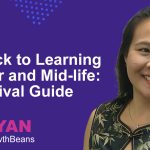An interesting statistic was released earlier in 2023: While the rate of job switching in Singapore rose to a six-year high in 2022, according to the Ministry of Manpower’s (MOM) annual Labour Force in Singapore report, the percentage of longer-tenured employees (referring to workers who have been in their job for at least ten years) reached a decade-long high at 31.1%, up from 29.3% in 2021.
It meant that while many in the Singapore workforce might have been hopping to new employers in recent years, many also decided to stay put.
The choice between sticking or shifting
Now we’re assuming they’re not staying for the long-service awards, as good as the afternoon tea and the ceremonial plaques can be.
It might well be that many workers have found their one true calling or career home, and they feel the pull factors such as salary, perks and environment aren’t as strong anywhere else. It’s certainly reasonable for them to decide to stay put in their current roles.
For others, the idea of changing jobs or careers, as recent numbers show the labour market cooling during economic uncertainty, doesn’t make sense.
But while the idea of a career security blanket in the form of long-term unemployment at the same employer might be comforting, dips in recruitment and cyclical retrenchments mean that there’s no predictability in the job market anymore, according to a survey by Milieu Insight for the Straits Times.
Stability doesn’t necessarily make a happy worker, either. According to a recent survey in Asia Pacific by Instant Offices, seven out of 10 Singaporean workers were unhappy at their current jobs!
As Deputy Prime Minister (DPM) Lawrence Wong said at the NUS IPS Singapore Perspectives Conference in January 2023, most Singapore workers will now have multiple careers in their lifetimes. Even in the rare case of somebody working in the same company throughout their lives, their work will likely evolve.
And this is hardly a Singapore phenomenon. A speaker at Workforce Singapore’s (WSG) Take Charge of your Career at Suntec July 2023 event shared statistics of how the average American worker has over 12 different jobs over a career lifespan.
A LinkedIn report referenced during the talk also showed that 34% of Singaporean professionals had no intention of staying with their current employers long-term, which shows frequent career changes are no longer seen as a sign of failure but are, instead, fairly aspirational.
These days, career-mobile workers constantly push themselves to grow professionally by taking on fresh, professional challenges and learning new skills rather than stagnating in their comfort zone.
Permanent jobs aren’t so permanent these days, either
At the same time, employers have started to value operational flexibility, given the fast-changing pace of the economy. They have begun to factor having contingent workers, and are reducing their core of permanent staff to optimise their labour costs.
Contingent workers include those on short or fixed-term contractual employment, freelancers, independent contractors, and workers who are outsourced from agencies.
According to talent advisory firm Kelly OCG, 48% of local HR executives believe such workers will enhance workforce resilience, as opposed to 43% who prefer permanent staff.
That is a marked change from previous patterns where companies would only hire contingent workers as temporary manpower solutions to be deployed when necessary, such as hiring a maternity cover.
Ultimately, while Singapore hasn’t quite seen considerable drops in the share of permanent employment, local workers can expect to see a gradual shift away from the traditional model of lifetime employment.
In the future, we can expect more transitions in and out of employment, and learning during adulthood. Careers may mean shifting between different jobs and work arrangements and may be interrupted by periods of unemployment or training.
Certainly something to factor in as part of planning for our own career resilience and journey!














